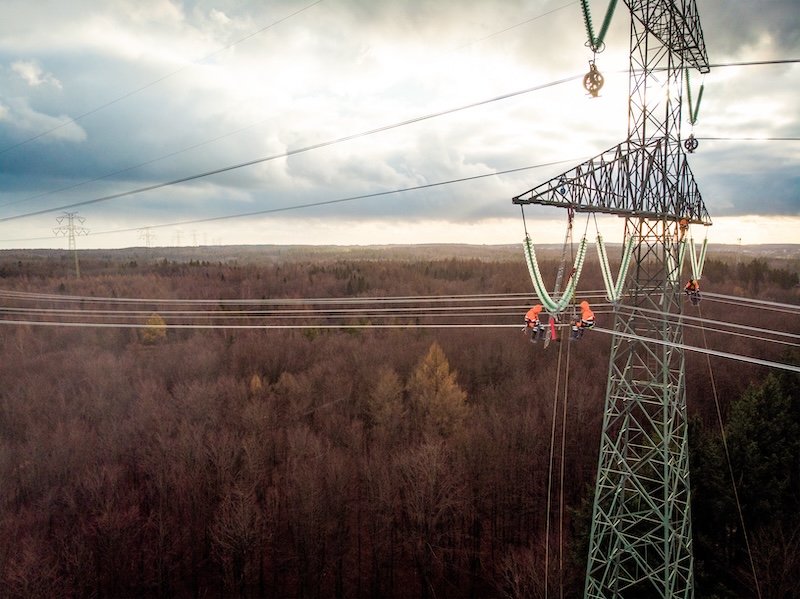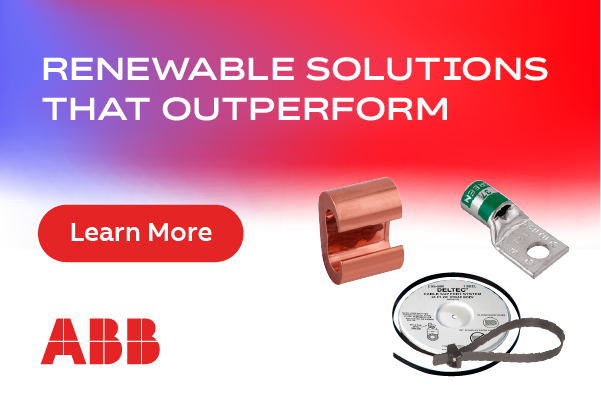Conducting Tomorrow’s Electricity through an Aging Grid
Largely unchanged for decades, the U.S. electricity grid faces immense pressure to support the growing demand for renewable energy sources, electric vehicles, and a rising population. Much of the grid infrastructure is reminiscent of the days when today’s senior citizens were children, with power lines strung up and down streets in a familiar web. Comprised primarily of aluminum conductor steel-reinforced (ASCR) cables, this legacy product — while rooted in the past — still offers value, and can serve as a foundation for future enhancements. The Department of Energy estimates that the nation’s network of transmission lines needs to expand by 4 times or more by 2035 to meet clean energy goals.

Upgrading existing infrastructure with advanced conductors is a critical and efficient solution. Doing so can double the grid's capacity and integrate much more wind and solar power, all while overcoming regulatory and bureaucratic hurdles.
Pressing need for capacity
The grid's growing demand is no secret. The current infrastructure is under immense pressure to support an increasing load. As more renewable energy sources come online and the adoption of electric vehicles rises, the need for a more robust and efficient grid becomes ever more critical. One of the biggest obstacles to expanding clean energy is the lack of power lines. Building new transmission lines, however, can take a decade or more due to permitting delays and local opposition.
How do advanced conductors help?
Advanced conductors are designed to address the critical capacity concerns facing the U.S. electricity grid. According to the Idaho National Laboratory Advanced Conductor Scan Report (December 2023), these conductors can have a significant impact on grid performance.
For example, the ACSS/TW/MA5/E3X conductor, when used in the same footprint as a traditional ACSR conductor, can provide a remarkable 218 percent increase in capacity. It also offers the following advantages:
- Enhanced strength and durability: Steel cores in these advanced conductors improve breaking strength by 2-3 times compared to traditional current aluminum conductors, providing better resistance to thermal sag and heavy load conditions like wind and ice.
- Efficiency improvements: These conductors significantly reduce line losses. The Idaho National Laboratory report highlights that advanced conductors like the ACSS/TW/MA5/E3X reduce resistance at 20°C by up to 20 percent, and at maximum operating temperatures (MOT) by up to 21 percent compared to ACSR conductors. We need this efficiency as more renewable energy sources are integrated into the grid.
- Longevity and safety: Specialized zinc-based coatings offer superior corrosion resistance to ensure the conductors remain functional and safe, even in harsh environmental conditions like coastal or industrial areas. This durability reduces the need for frequent replacements and maintenance, providing long-term cost savings and reliability.
The Bonneville Power Administration (BPA) is upgrading its grid with ACSS/TW Plover conductors, which are compatible with existing towers. These new conductors operate at higher temperatures, and significantly increase capacity. While current ACSR conductors run at 2,300 amps, the ACSS/TW Plover can handle over 4,300 amps — an 87 percent increase. This maximizes the efficiency of existing infrastructure, avoids the costs and delays of new construction, and provides a practical solution to meet modern energy demands.
Adopting advanced conductors can help to transform the U.S. electricity grid. Upgrading existing infrastructure, rather than building new lines, can save significant time and money while enhancing capacity and reliability. This approach future-proofs the grid against upcoming challenges while also meeting current demands. Employing state-of-the-art materials can roughly double the capacity of the electric grid in many parts of the country.
Efficiency in the electrical grid is vital for addressing climate change and rising energy costs. Conductors with steel cores are particularly advantageous in this respect. Adding a steel core increases the breaking strength of an aluminum conductor by a factor of 2 to 3. These conductors are more resistant to thermal sag, and sag caused by heavy winds and ice loading. They also reduce horizontal blowout distances and the probability of horizontal clearance violations.
High-tensile strength steel cores provide up to three times the corrosion protection of conventional galvanized steel, reducing maintenance costs and extending the lifespan of transmission lines. These cores also enable higher operating temperatures, crucial for areas with heavy ice loads or high winds. Additionally, composite core conductors offer reduced weight, low thermal expansion, high tensile strength, and corrosion resistance. These features collectively enhance the efficiency and durability of the grid, making it better suited to meet modern energy demands.
Coated steel cores in conductors offer robust protection against the elements, significantly reducing the risk of corrosion, even in harsh environments like coastal or industrial areas. This ensures that the conductors remain operational and efficient throughout their entire lifespan. The result? A notable reduction in the need for frequent replacements and maintenance, thereby improving overall durability and performance.

The economic value of improving conductor efficiency by just 1 percent is substantial. For example, using the 795 kcmil ACSR “Drake” conductor as a reference, and assuming specific conditions, a 1 percent efficiency improvement can save approximately $8,515 per mile annually. Over the conductor's service life, this efficiency gain translates to a net present value of nearly $1,796 per mile.
These significant long-term savings justify the investment in high-quality conductors, particularly as the grid integrates more renewable energy sources that require stable and efficient transmission lines. Upgrading also reduces overall electricity costs for consumers by minimizing energy losses during transmission.
Optimizing grid efficiency involves selecting suitable designs and sizes, as well as reducing current through more efficient conductors. Advanced conductors like ACSS/TW can improve efficiency by up to 33.7 percent over traditional ACSR conductors. Such improvements are essential for creating a resilient, efficient, and sustainable power infrastructure as the U.S. moves towards its 2030 energy goals.
Daniel Berkowitz is Strategic Market Manager at Bekaert Steel Wire Solutions North America.
Bekaert | www.bekaert.com
Author: Daniel Berkowitz
Volume: 2024 September/October








